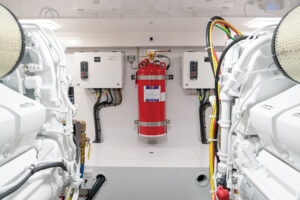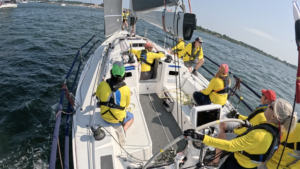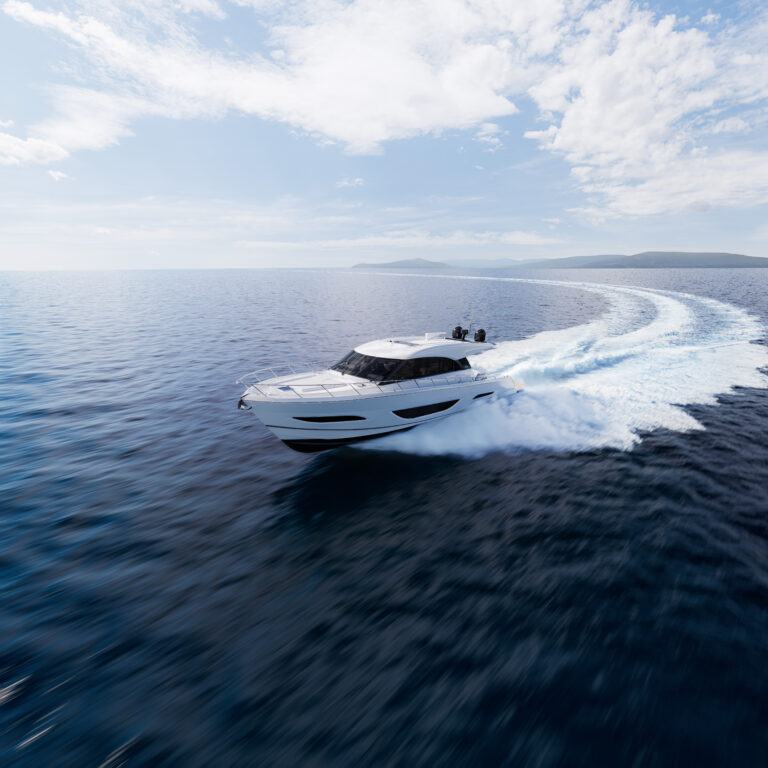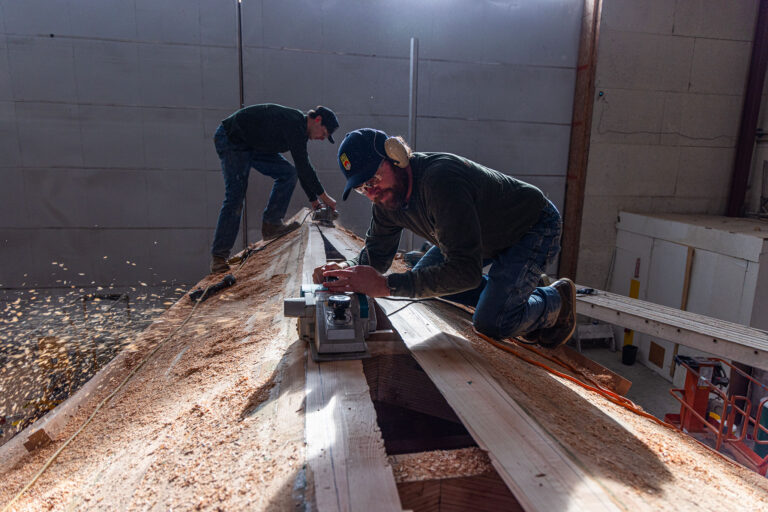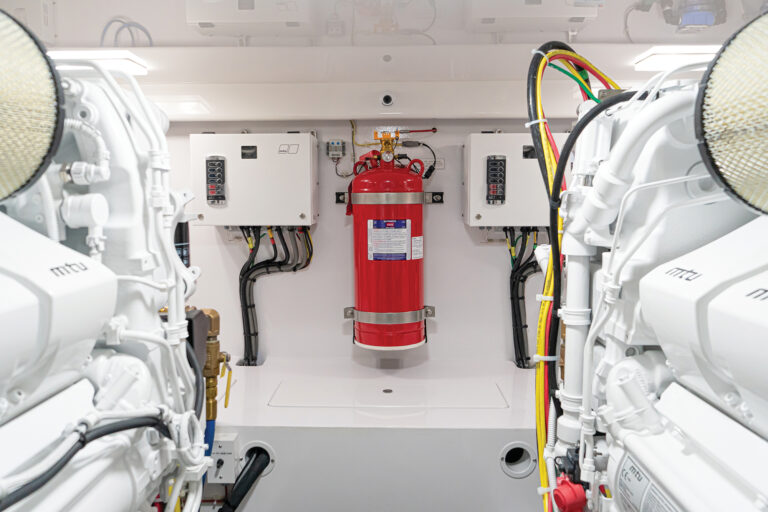Until we grow gills, keeping the water on the outside of the boat is a pretty good way to ensure longevity. But one day you could find yourself sloshing around in shin-deep water, especially if you spend any time fishing the rips.

Getting the water back over the side as quickly as possible is important for maintaining stability. One of the attractions of our 22-foot Swamp Yankee project boat is its self-bailing cockpit and big scuppers. The Sisu 22 has two oversized scuppers that are almost 6 inches by about 2-1/4 inches. “Big mothers” is how shipwright Charlie Koller describes them. The idea is to shed any water sloshing around on the deck in a hurry in order to minimize the free-surface effect.

Charlie enlarged the original scuppers to remove a lip on the inside edge of the drains, bringing the scuppers flush with the deck and preventing water from puddling inside the boat. We think we’ve got a quick-draining cockpit; time will tell.
The other thing we’ve done to increase safety is to add flotation to Swamp Yankee in the form of closed-cell foam cut to fit the forward and aft bilges. I wanted the boat to stay afloat under the worst-case scenarios — decks awash to the gunwales, a hull breach, a capsize.

Something to keep in mind: There are no federal regulations or standards for flotation in boats 20 feet and greater, even though a handful or two of companies do add flotation to their boats.
The Coast Guard requires all monohull outboard boats under 20 feet to have level flotation — in other words, they must have enough flotation distributed symmetrically so the boat will float relatively level when swamped.
I hope I never find out whether Swamp Yankee floats level, but Charlie and I are confident she will float. He packed the forward bilge, which is about 3 feet at her deepest, with foam cut with a handsaw to fit the space. The aft compartment is right next to the transom — the ideal area to place flotation to support the outboard.

Altogether, Charlie estimates we used seven 10-by-20-by-96-inch foam billets, each with a buoyancy force of about 610 pounds. “That’s a lot of flotation,” Charlie says. “Any more and that boat would float right out of the water.”
Charlie knows a little something about flotation. In the 1970s he worked at the Coast Guard R&D Center in Groton, Conn., when the agency was testing flotation in small boats. And during the 1990s he rebuilt a lot of floating docks as associate harbormaster in San Francisco.

“You build docks long enough, you get to know foam and flotation,” he says.
If you want to delve more deeply, visit the American Boat & Yacht Council website and try a free five-day trial of its standards. The buoyancy project is H-8.
* * *
Shifting gears. When you do a boat refit project, you get as many opinions about the right way to do something as you have people who stop by to see the work. The three deck panels on our Sisu project boat are cored with balsa, and each has a solid-glass flange about 3/8-inch thick and about 4 inches wide. The panels are heavy.
A mechanic friend thought each panel should be supported by an additional bulkhead once in place to keep them from flexing. Charlie laughed and said they were stiff enough to carry a VW without flexing.

In this photo you see Charlie and me standing on a panel supported by sawhorses while trying to get the piece to bend. (He humored me.) That’s roughly 400 pounds in our work boots.
No give. Stiff as a post.


